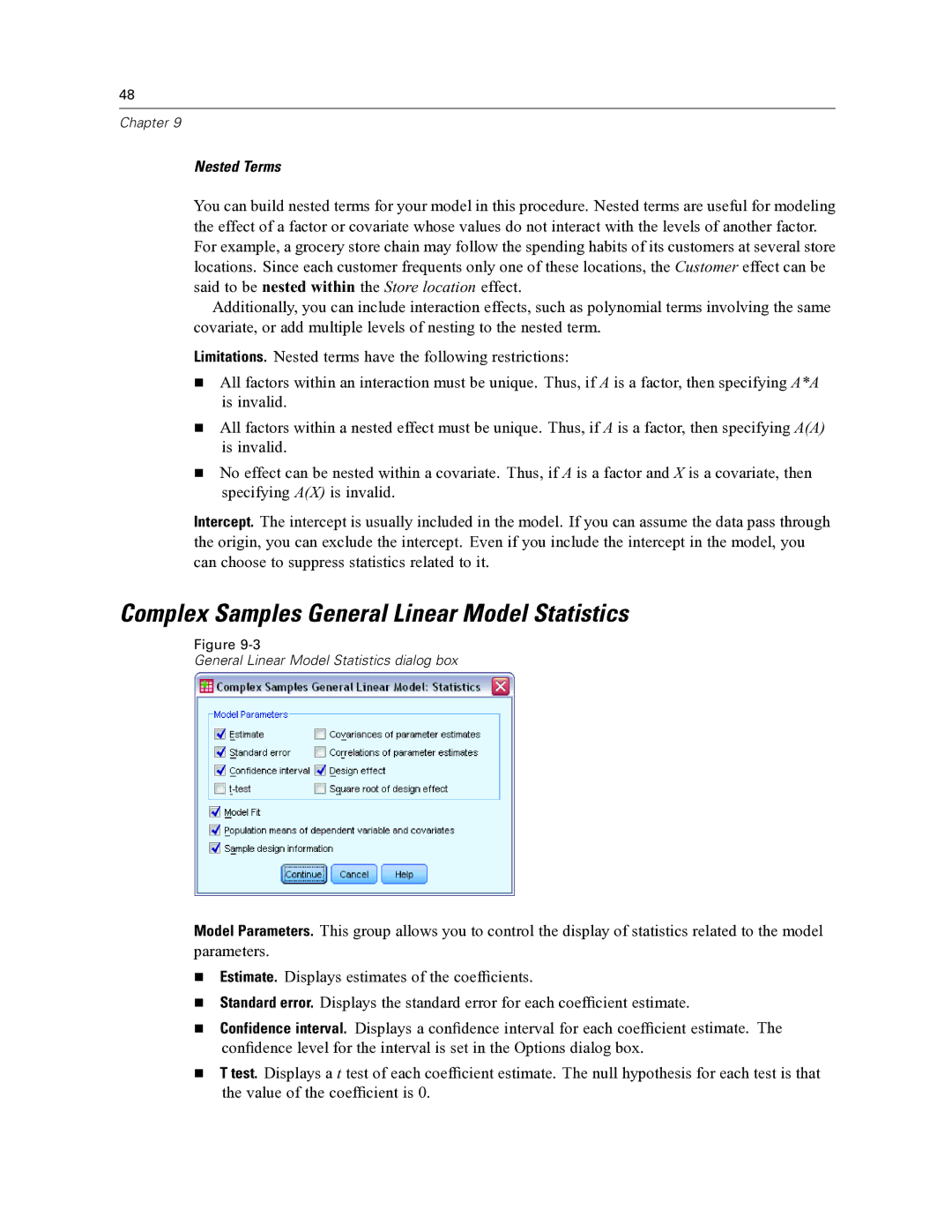
48
Chapter 9
Nested Terms
You can build nested terms for your model in this procedure. Nested terms are useful for modeling the effect of a factor or covariate whose values do not interact with the levels of another factor. For example, a grocery store chain may follow the spending habits of its customers at several store locations. Since each customer frequents only one of these locations, the Customer effect can be said to be nested within the Store location effect.
Additionally, you can include interaction effects, such as polynomial terms involving the same covariate, or add multiple levels of nesting to the nested term.
Limitations. Nested terms have the following restrictions:
All factors within an interaction must be unique. Thus, if A is a factor, then specifying A*A is invalid.
All factors within a nested effect must be unique. Thus, if A is a factor, then specifying A(A) is invalid.
No effect can be nested within a covariate. Thus, if A is a factor and X is a covariate, then specifying A(X) is invalid.
Intercept. The intercept is usually included in the model. If you can assume the data pass through the origin, you can exclude the intercept. Even if you include the intercept in the model, you can choose to suppress statistics related to it.
Complex Samples General Linear Model Statistics
Figure
General Linear Model Statistics dialog box
Model Parameters. This group allows you to control the display of statistics related to the model parameters.
Estimate. Displays estimates of the coefficients.
Standard error. Displays the standard error for each coefficient estimate.
Confidence interval. Displays a confidence interval for each coefficient estimate. The confidence level for the interval is set in the Options dialog box.
T test. Displays a t test of each coefficient estimate. The null hypothesis for each test is that the value of the coefficient is 0.
